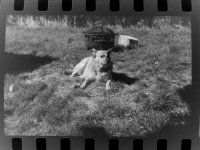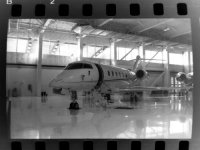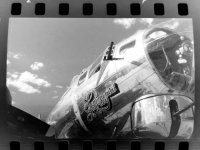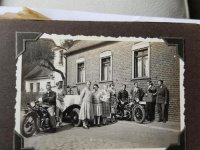weirdnerd
Member
I am a noob, Started last August jumping into the deep end, Got a Canon FT and a yashica Electro 35, using OrwoPan 125, expired in 2005, and because I am who I am, decided to make my own developer, dev stop and fixer.
So far so good, first couple of rolls showed me that the film ( seems to be Ilford FP4, 125 speed) had degraded in speed down to ASA 64.
The question I have is on how to evaluate negatives, how to "see" if I am over or under developing the film.
At the moment I am using Parodinal and developing at 13 minutes at 20 Celsius. and somehow I am not seeing a lot of detail as I have seen you get here. some of the pictures are nice, but some are what you call "muddy".
I want to find the way on how to make my pictures 'technically sharp", I know it is subjective and everyone has a different idea. At the moment I am very low tech, using a homemade "light box" to take pictures of the negatives with the cell phone, I know, not optimal, but at the moment I just bought a Durst enlarger and I need to get the paper. ( with the inconvenience that I have no dark room yet)
I just want to "understand" the chemistry behind, and to do that I need to understand how to evaluate the negatives, that way I can adjust the times to match what I want.
Must emphasize that all my previous film experience was using a point and shoot and sending the film to a photolab.
here are some of my best pictures:
So far so good, first couple of rolls showed me that the film ( seems to be Ilford FP4, 125 speed) had degraded in speed down to ASA 64.
The question I have is on how to evaluate negatives, how to "see" if I am over or under developing the film.
At the moment I am using Parodinal and developing at 13 minutes at 20 Celsius. and somehow I am not seeing a lot of detail as I have seen you get here. some of the pictures are nice, but some are what you call "muddy".
I want to find the way on how to make my pictures 'technically sharp", I know it is subjective and everyone has a different idea. At the moment I am very low tech, using a homemade "light box" to take pictures of the negatives with the cell phone, I know, not optimal, but at the moment I just bought a Durst enlarger and I need to get the paper. ( with the inconvenience that I have no dark room yet)
I just want to "understand" the chemistry behind, and to do that I need to understand how to evaluate the negatives, that way I can adjust the times to match what I want.
Must emphasize that all my previous film experience was using a point and shoot and sending the film to a photolab.
here are some of my best pictures:





